Sarajevo
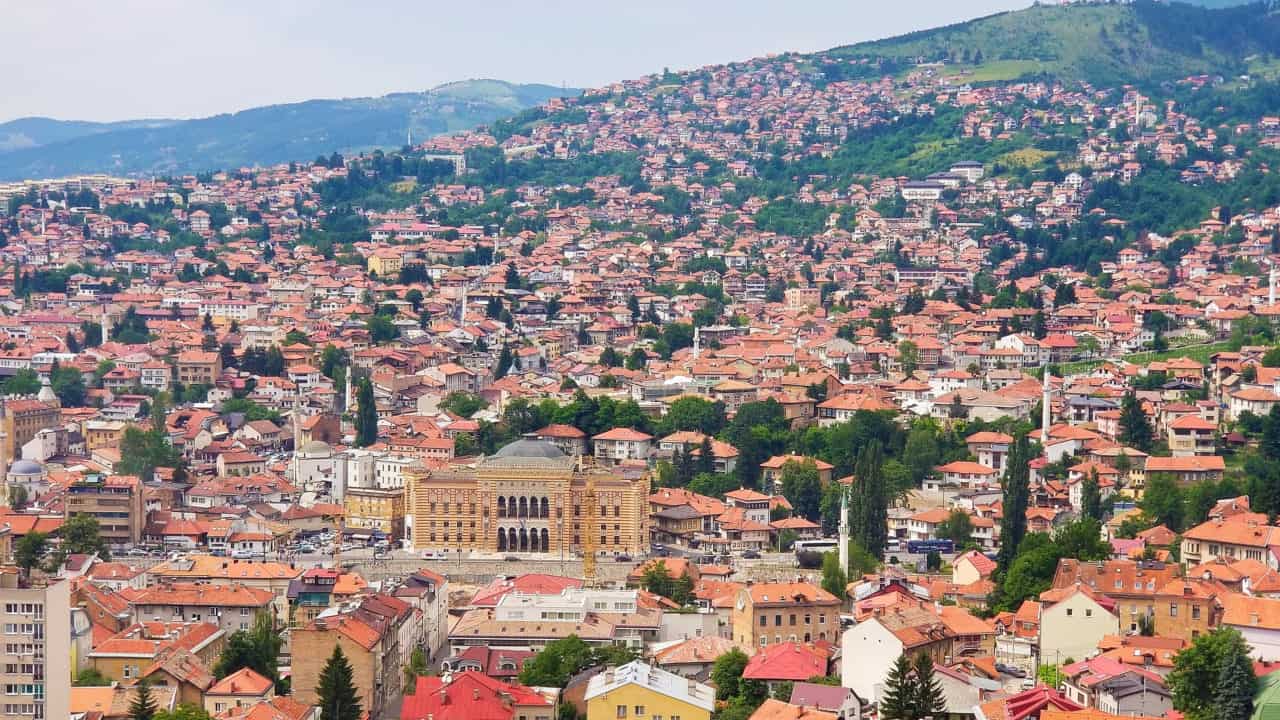
Mike and I have just spent 10 hot days in Sarajevo. Sarajevo has a strong Muslim culture. It is interesting that in Croatia you would see bell towers standing high above the villages all over the towns and the hills. It seemed that the Catholics always wanted to build their churches on the highest possible ground. In the Sarajevo area, instead of bell towers you see Minarets everywhere. The towers themselves are very high and stand out over the towns and villages that are largely one and two-storey buildings. The mosques seem to be more in the middle of town instead of separate on the high ground. Sarajevo is one of only a few major European cities which have mosques, Catholic churches, Orthodox churches and synagogues, all in the same neighborhood.
In 2013 Sarajevo’s population was 275 thousand but the larger metro area was over ½ million. As of 2018, the average wage is about $600 Cdn per month and a lot less in many areas. Food in Bosnia is the least expensive that we have seen on our trip so far with the rural areas being the cheapest. The main food in this part of the world is definitely meat. I pity the visiting vegetarians. Mike and I saw the US embassy as we were walking around. It stood out as it had more fences, guards and guns than we had seen anywhere else.
By Balkan standards, Sarajevo is a relatively new city, founded after the Ottoman conquest. The history of the old town begins in 1462. Baščaršija, sitting right on the Miljacka River is Sarajevo’s old town or market area and the historical and cultural center of the city. In large part, Baščaršija looks like what I picture Morocco bazaars to look like. Since I have never been to Morocco, I might be all wrong. There is a huge Turkish influence. The Turks ruled Bosnia for 400 years while the Austro-Hungarian empire was only here for 4 decades ending with WW1.
The golden period of Sarajevo or Baščaršija was in the 17th century. A devastating fire destroyed half of the area and it was not rebuilt. The old town is still an outdoor bazaar in a maze of narrow streets with small souvenir shops and cafés. When they were originally built each street was dedicated to a different kind of craft such as metalwork, jewelry, pottery, and so on. Old Sarajevo is a very interesting area to wander around in with a lot of history, a lot of shops, and a lot of museums.
Right on the river is the City Hall considered Sarajevo’s most beautiful Austro-Hungarian building. If you look at the top picture, it is the large building in the centre towards the bottom of the photo. In the 1890s the government wanted to build the new City Hall on the right side of the river. The landowner refused to leave or sell his land to the city. After long negotiations, the owner finally said that he would give up his property if he was given a bag of golden coins and if his house was moved brick by brick to the other side of the river. They did that and since then his house has been called “Inat kuća” or “House of Spite”. Today it is a traditional Bosnian restaurant where Mike and I had a lovely lunch.
The country’s parliament buildings are here. There are two buildings side-by-side, one high-rise and one five-storey lower building. The lower building is the official parliament building although I think a lot of the government employees work in the high-rise. What is so surprising is that the tall building is called the Greek Friendship building. It was badly damaged during the 1992-1995 war, and in 2006 the Greek government paid 80+% of the reconstruction costs. This seems strange to Mike and me. Wasn’t Greece already in deep financial difficulties at that point in time?
In Bosnia “the war” nearly always refers to the 1992-1995 Bosnian war, part of the breakup of Yugoslavia. The main viewpoint here is that the Serbians were the attackers who bombed and starved a large part of the country and committed ethnic cleansing and genocide towards the Bosniaks or Bosnian Muslims. I am sure that the Bosnian Serbs would have another viewpoint. Sarajevo itself underwent the longest siege in modern day history, 1425 days. 12,000 people died, 1,600 of them were children. I don’t want to downplay the horrors that occurred in Sarajevo at this time, but the city often highlights the fact that their siege was the longest even when compared with Leningrad. This is true, the Sarejevo siege was a year longer than the awful siege of Leningrad but somehow that makes it sound like Sarajevo had it worse than Leningrad. I don’t think we should forget that the death toll of the siege of Leningrad varies but most people put it around 1 ½ million people. On a side note, according to Wikipedia: The US Military Academy evaluated that Russian casualties during the siege were higher than the combined American and British casualties during the entire WWII.
During the Sarajevo siege an 840 metre “Tunnel of Hope” was built connecting two Bosnian territories that had been cut off by the Bosnian Serbs. Part of it ran underneath the airport. The tunnel allowed some food, humanitarian aid and arms to come into the city and allowed some people to get out. The military strictly controlled all access to the tunnel. 25 metres of the tunnel is open for tours and the house the tunnel started in has been converted to a museum. It was very interesting.
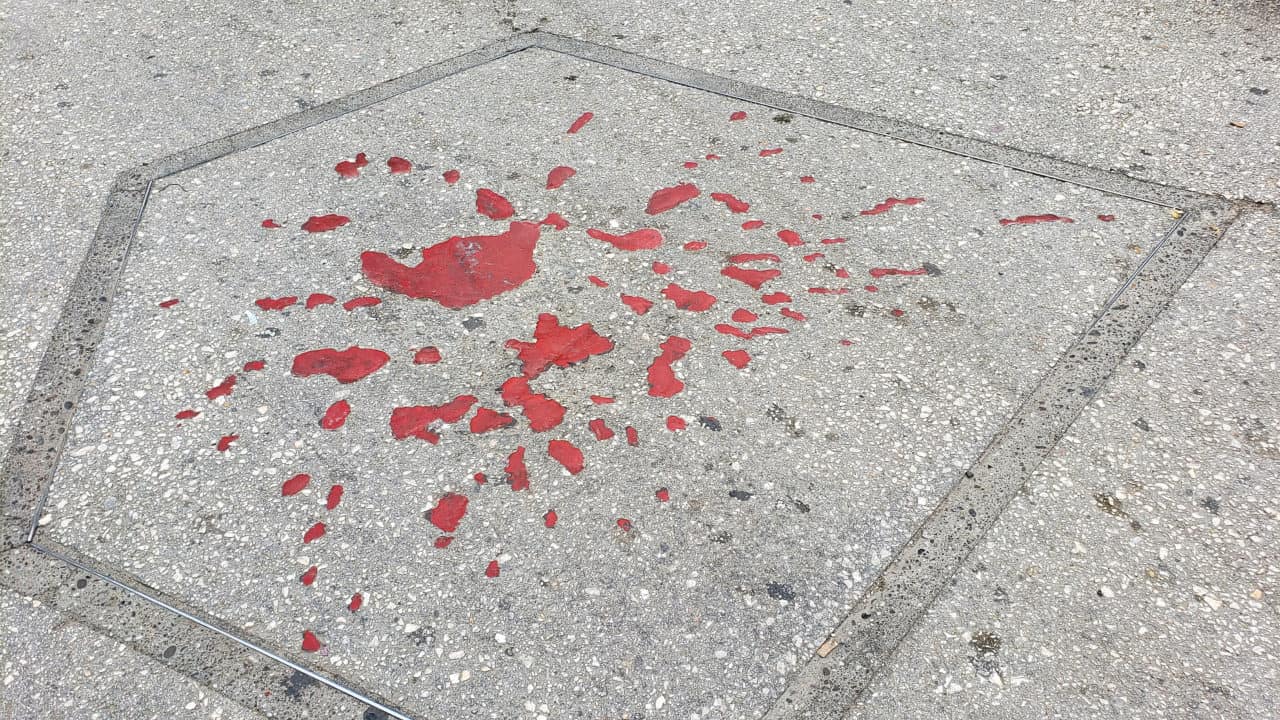
I have mentioned previously about the number of buildings that still have the bullet holes in their exterior all over the country, even after the homes have been repaired. Sarajevo has what are called “Sarajevo Roses” in the pavement. They picked 100 locations, each one where 3 or more people had been killed in a shell attack. The holes that the shells made in the pavement were filled in with red paint. The blast outline often looks like a flower. Today there are less than 100 Sarajevo Roses as new buildings and repaving take their toll.
Mike and I didn’t visit many museums, but we did enjoy the Museum of Sarajevo. In the museum were a couple of things of note. There was a large-scale model of old town Sarajevo from the 19th century which was very well done. There was also an exhibit talking about the Ottoman times when there was a decree that non-Muslims couldn’t build new places of worship. In Sarajevo the Turks were quite tolerant and Christian churches continued to be restored and built. There were also some mannequins in traditional dress. I was really surprised at one of the displays. In Ottoman times there was a law or decree that stated that Muslims and non-Muslims had to wear different clothes. What was really surprising to me was that non-Muslims were only allowed to wear the more somber colours like violet, black and blue while the Muslims wore the brightly coloured clothes. Given how many women Mike and I see fully covered in black Niqabs and Burkas I don’t know when the colour code changed. I heard that these coverings are relatively new to Bosnia and have been brought here by Muslims from other countries.
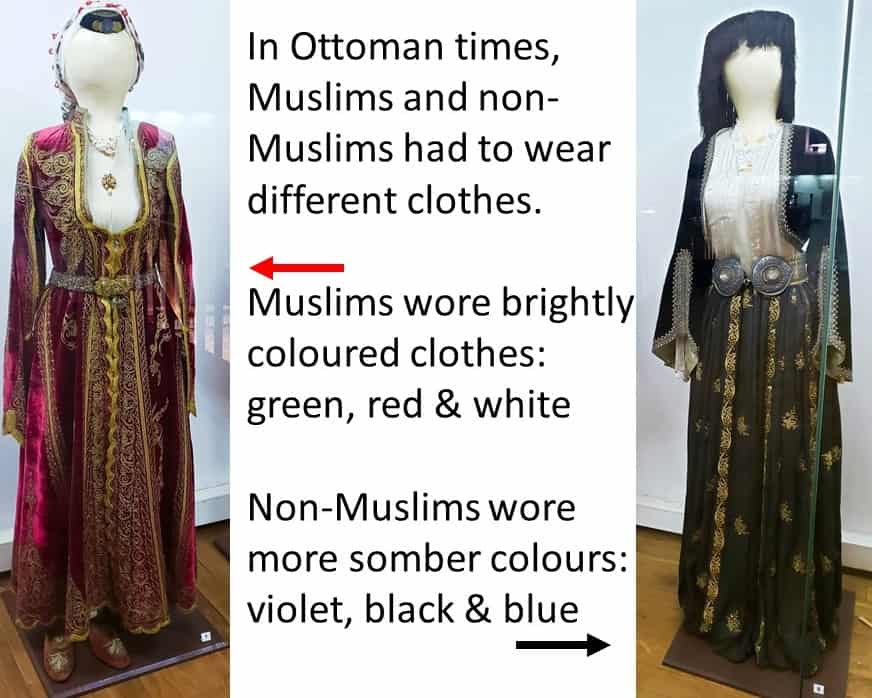
One other “museum” that we visited was the nuclear bunker built under Tito’s command starting in 1953. One day Mike and I must visit Canada’s Diefenbunker near Ottawa. Tito’s bunker is a large complex that was designed to keep Tito and the most important 350 political and military people safe and fully supplied for six months. Wives and children were not included. It was a top-secret project with workers being blindfolded before they were driven to the site. In addition to being very expensive monetarily, according to the testimonies of some of the workers, not a single shift passed without a fatality. The bunker still exists today only because a military guard refused to carry out an order to blow up the bunker in 1992.
The other item of historical significance in Sarajevo was the assassination of Archduke Franz Ferdinand of Austria in 1941 while visiting Sarajevo. This assassination led directly to World War I when Austria-Hungary declared war on Serbia, thereby triggering actions leading to war between most of the countries in Europe.
While we were in Sarajevo, we did a fair bit of driving around the area. We drove up to the highest village in Bosnia and Herzegovina, Lukomir. They say that Lukomir is like a living ethnological museum, where the customs of nomadic tribes and Dinaric highlanders are still practiced. People used to live here year-round but have recently moved to lower altitudes with less snow during the winter. As I have said before, our Lincoln is not meant for these rough mountain “roads”. We gave up on one site, high on a mountain near Lukomir. We have to keep reminding ourselves that our modified car (for towing by the RV) is far more important than another spectacular mountain vista.
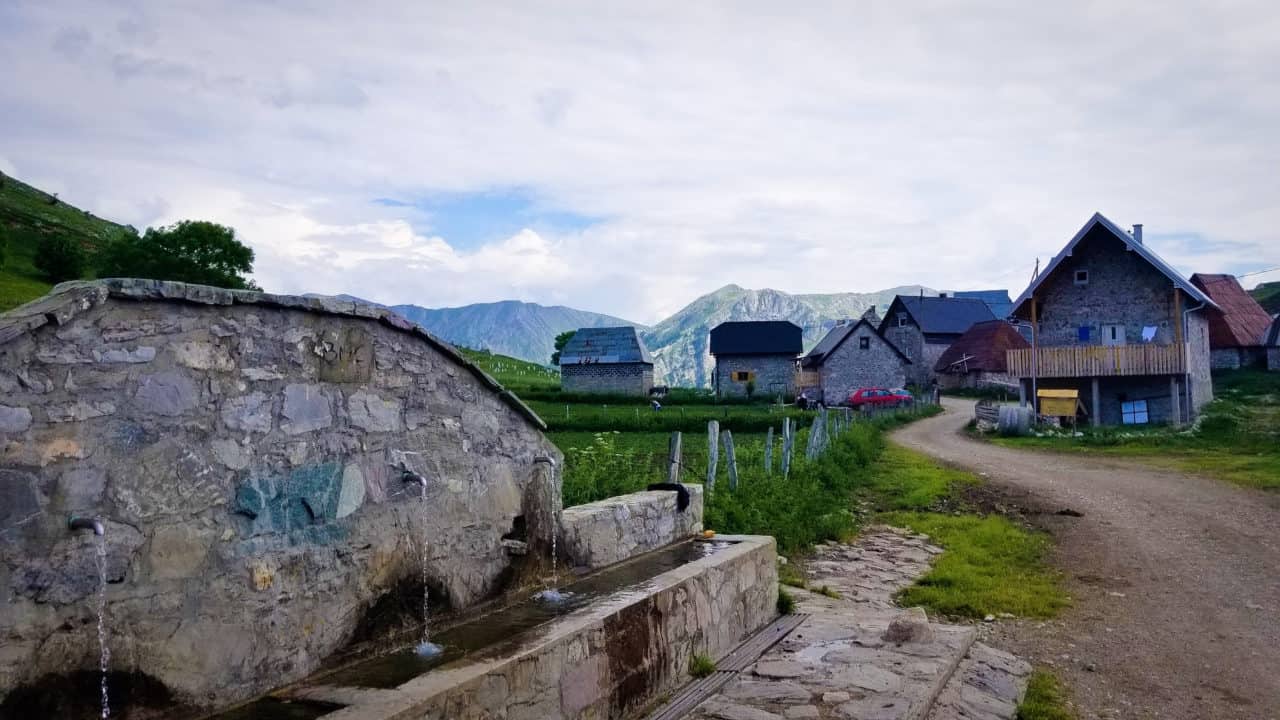
Mike just reminded me that I left out one incident in Sarajevo, my bike accident. There was a lovely park about 4 km from where Mike and I were staying. Around the park was a narrow, tree lined road used mainly by horse and buggies that take tourists out for rides. Mike and I were biking down this road and it had a fair bit of horse manure on it. I tried to ride between the edge of the manure and the road (about a 4-inch width) and slipped off the road. It was only a one- or two-inch drop but my front tire skidded along the edge of the road and I went flying, sliding down the road. For once my bike was basically OK but I wasn’t in such good shape. My arm was scraped from my elbow almost down to my wrist, the rest of my body was badly bruised with one knee very sore. Mike tried to wash whatever the dirt was in my wounds in a nearby stream. That didn’t go over well. I did manage to ride the 4 km back to the RV. Luckily our electric bicycles have a throttle since my knee wasn’t much help. I was pretty sore for quite a few days. Mike did an excellent job of playing nurse and bandaging up his wife every day. Since I am a little late writing this, I can report that the scrape has almost gone, and the bruises are fading. I guess I survived another one.

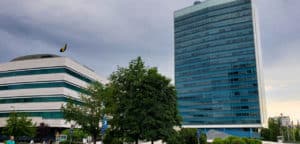
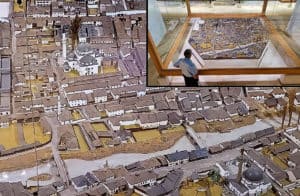
Leave a Reply